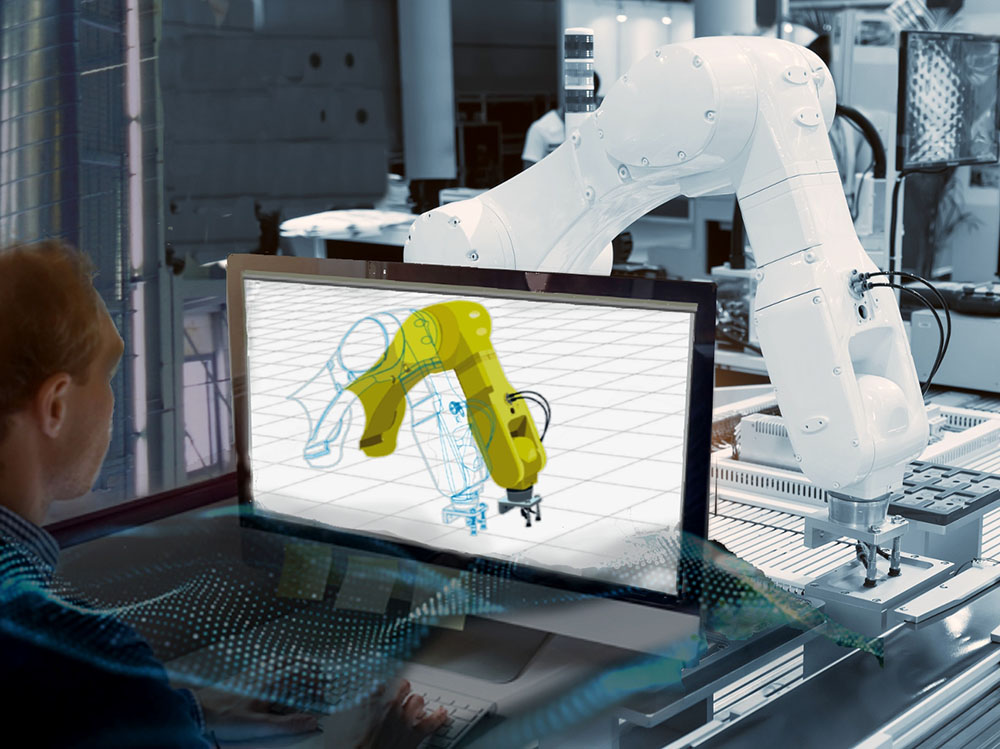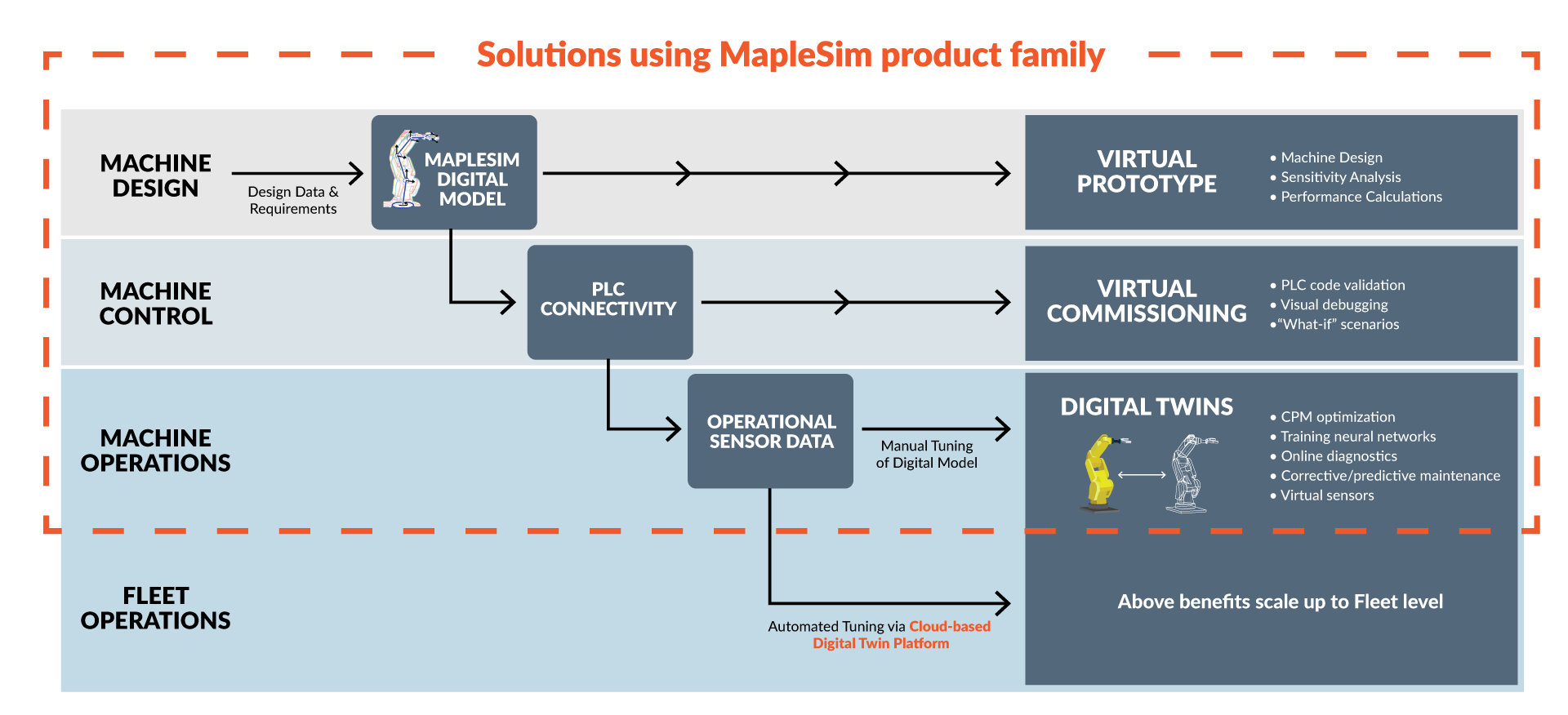
Maple
Powerful math software that is easy to use
• Maple for Academic • Maple for Students • Maple Learn • Maple Calculator App • Maple for Industry and Government • Maple Flow • Maple for Individuals





Simulations and digital twins both utilize digital models to represent the various processes of a system, but a digital twin provides a virtual environment that stays up-to-date, making it more flexible for applications across a product lifecycle.
A digital twin can be used during R&D and production all the way through to monitoring and maintenance. It unlocks synergies by providing a single source of truth across every department, from design to training to marketing.
Maplesoft has aligned with industry leaders to accept a common definition of a Digital Twin:


Saving Time and Money on Designing

Faster Control Testing

Reduced Downtime

Reliable Modeling Responses
In industry, the Digital Twin offers unlimited possibilities beyond the design process. For teams that model machines and industrial systems, these include providing a virtual environment for designing, testing, monitoring, diagnostics, and for developing an extended reality (augmented, virtual or mixed reality) for visualisation and training.
Whilst there is a visual appeal to factory-level simulations, the whole design process sees an increase in value and scalability by applying the modeling at the machine level.
The key value proposition of machine-level Digital Twins originates from:
Most companies are excited by the opportunity and efficiencies of adopting digital engineering techniques but struggle to transform multiple systems at once, leaving them cautious that they will actually achieve the business targets through the process.
Based on our experience supporting customers across a range of industries, we offer a MapleSim roadmap to success that builds from digital models to digital twins and allows you to:
Throughout this process we recommend that you:
MapleSim provides an efficient flexible modeling environment for developing your digital twin. Creating a MapleSim digital model gives a virtual representation of your product and is the first step to applying virtual commissioning and digital twins to digitally transform your operations.
The progressive solution roadmap provides a framework to meet your business objectives quickly, with realistic commitments from your internal resources.

The MapleSim model acts as a virtual prototype, helping the designer to evaluate parameter sensitivity and general performance expectations and selecting components, such as gears and motors.
As an essential component of modern virtual commissioning, the MapleSim model serves as a realistic simulation for fast, accurate PLC testing, ensuring that control design issues are ironed out before they reach the production floor.
When combined with physical performance data, the MapleSim model becomes part of a Digital Twin and provides value-added features for your production processes, such as:
Automating the operational data updates using a cloud based digital twin solution, lets you include a fleet of machines within the simulation of your industrial systems and facilities. This unlocks the cost-savings of predictive modeling, real-time failure detection and increased line throughput.
What do Fleet-level Digital Twins look like?
These blog articles show potential workflows when using MapleSim's powerful system-level modeling capabilities alongside cloud-based digital twins: